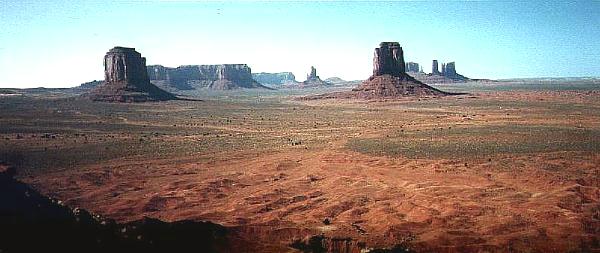
Studying succession (continued)
- Stable-isotope analysis
- chemical evidence of vegetation change; useful for assessing
changes in photosynthetic pathway of dominant plants
- e.g., in most grasslands of the southern US, grasses have
C4 Ps pathway, woody plants have C3
pathway --> useful
for studying woody plant abundance in former grasslands
or savannas
- basis: C3 and C4 plants take up carbon-13
and carbon-12
(stable isotopes) at different rates from the
atmosphere
- decomposition rate is same for both guilds
- thus, organic carbon in the soil leaves a signature
which indicates the relative proportion of C3
and C4
plants which contributed the carbon
- age is usu. inferred from soil depth; direct measure of age
requires carbon-dating ($$)
- Opal phytoliths (plant microfossils)
- microscopic silica particles formed within plant cells and
cell walls that can persist in soils for many millennia after
carbon-based biomass has decomposed
- different taxa leave characteristic microfossils --> technique
is more specific to taxa than stable-isotope analysis
- production and persistence of silica particles varies between
plants
- very expensive --> ltd. sample size
- as w/ stable-isotope analysis, direct measure of age requires
carbon-dating--in this case, C from within microfossils is
used, and dating is done w/ accelerator mass spectrometry ($$)
- Pollen-grain analysis
- pollen in soil used to indicate relative proportions of plants
- production and persistence of pollen grains varies between
plants
- Case-study: Woodland/grassland boundary change in southeastern
Arizona (oak woodland, semi-desert grassland)
- Hastings and Turner (1965, The Changing Mile)
- Bahre (1991, A Legacy of Change)
- McPherson et al. (1993 Oecologia 93:95-101)
Previous
lectureNext lecture
